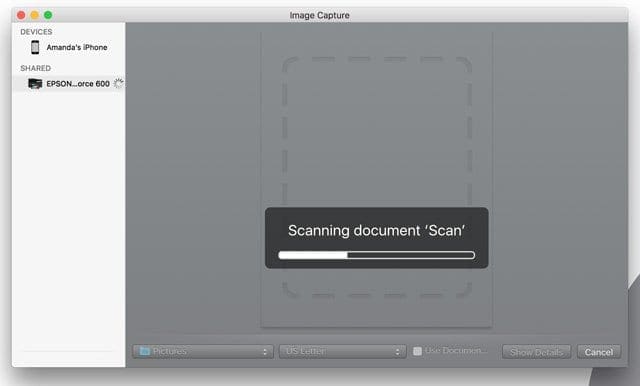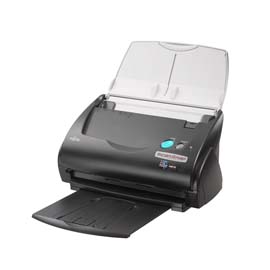Flatbed Scanner Even though digital cameras are the norm in today’s technologically savvy age, that doesn’t mean you don’t have any physical photos lying around. If you want to share them on your or store them on your computer, you need a photo scanner. Before you learn which is the best photo scanner, however, you must understand what a photo scanner is. Like other scanners, a photo scanner is an optical scanner designed to capture information.

It then transfers this information to the computer. Unlike a typical printer-scanner combo, however, a photo scanner is specialized and designed to scan photos. They are often smaller than other scanners but give the scanned photos a higher resolution. As a result, they appear clearer and crisper on the computer screen.
On average, a typical photo scanner scans 3×5 inch and 4×6 inch photos at 300 (dpi). Some offer higher resolutions or can even scan negatives. Scanning photos is perfect, whether you’re a student, professional or business, and it has many great advantages:. Protecting your older photos and slides by backing them up on your computer.
Sharing them with your friends or family on social media or via email. Being them off and make copies. Use in conjunction with photo editing software to restore photos Photo Scanner Buying Guide There are many different photo scanners out there, and each one comes with its own set of benefits and disadvantages. They key to finding the best scanner for you is finding the right balance between the pros and the cons to meet your specific needs.
When looking at scanners, make sure to ask yourself a few questions, which will guide you to choose the right scanner for you. What are the common types of photo scanners? First, you should understand the various types of common photo scanners available:. Flatbed scanner. Sheetfed scanner. Film scanner.
Transparency scanner. Drum scanner. Sheetfed /Autofed Scanner A flatbed scanner is the most common type of photo scanner, and they can scan photos and documents. Flatbed scanners tend to cost less than film scanners, but you sacrifice image quality. Or also known as manual/automatic feeder is smaller scanner compared to flatbed.
While not compromising the quality of the image, the sheetfed scanner feeds the photo and rolling it out rather lying it on the surface. Film scanners have the ability to scan film, such as the negatives to your photos. As a result of scanning the actual negative, the photos are high-quality, but they cannot scan documents.
A transparency scanner can scan slides, but it can also scan larger transparencies. They are designed for professional use and are high-end. A drum scanner is another professional scanner for businesses. This type of scanner captures the highest resolution possible from photos and transparencies. Automatic feeder scanner vs flatbed scanner. What are you scanning?
Not every scanner has the ability to scan each type of media. For example, a flatbed scanner cannot successfully scan negatives. Therefore, you must know what you expect to print, such as:. Prints. Black and white negatives. Slides. Color negatives.
Paper documents. Large transparencies. Professional pictures If you expect to scan only prints, a flatbed scanner may be enough, depending on what you are doing with the scans. A flatbed scanner is also a good option if you need to scan documents too, since a film scanner cannot scan documents. If you are scanning slides, unless you need to scan particularly large transparencies, in which case, you’ll need a transparency scanner or a drum scanner.
Make sure you know exactly what you want to scan. Even if you purchase a, it may not be suitable for your color negatives. You should even know the size of the pictures or film you plan on scanning, so you don’t end up with a product that is completely incompatible. What are you doing with the scans? Now that you know what you’re scanning, you need to know what you’re doing with these scanned images once they are on your computer:.
Sharing online or via email. Just storing them on your computer for backups.
Making copies. Large transparencies. Using for business If, like many people, you just want to share them online with friends and family, the solution is easy. A flatbed scanner with low to medium resolution won’t cost you an arm and a leg, and it will give you an acceptable resolution for viewing pictures online. Plus, when you share pictures online or upload photos, you don’t want the resolution to be too high. It only makes the file and the image itself bigger, which makes for awkward viewing on a computer screen. On the other hand, if you are storing them for backups or making copies, it’s best to go with higher resolution, like a film scanner.
When you print pictures with low resolutions, they don’t come out as vibrant as the original, and you end up with obvious copies of the picture. In particular, a scanner with higher resolution is the best photo scanner for old photos, which may look blurry or faded at lower resolutions. If your businesses routinely print large transparencies, your best bet is to get a transparency scanner. However, if you only expect to print a handful, consider a transparency adapter to your current flatbed scanner. If you use pictures for your business, for example, you are a professional photographer and print the photos for your client, you may want to invest in a drum printer. They offer the best resolution possible to make professional, beautiful pictures.
What type of computer do you have? The best photo scanner for Mac and PC may not be the same product, so make sure you know what type of computer you have before you buy. Mac.
PC If you have a PC, you’ll have less problems finding a compatible device. However, if you have a Mac, finding a device that works with your computer may prove challenging. You may even need to take some extra steps to ensure it actually works. Make sure to see if the device is compatible with your computer, and if you have to do anything special to connect it. The Best Scanner for You There is no single best photo scanner out there.
The best one for you may not be the best one for someone else. It all depends on your needs. To summarize, if you are using the scanner for personal reasons and expect to scan prints or documents, and/or you are sharing via email, a flatbed scanner with medium resolution is a good option. However, if you expect to print images, you’ll want something with higher resolution. If you want to scan negatives or film, you’ll need a film printer.
On the other hand, if you are a business, consider a transparency printer if you print large transparencies or a drum printer for the highest quality possible.

Best Scanner Software For Mac 2017
Whether you want to archive your printed photos, digitize business records, or simply want a multifunctional machine for whatever needs arise, a decent scanner is an invaluable resource. The question is, how do you pick the best scanner? With hundreds of models on the market, from a wide range of manufacturers, how can you sort the wheat from the chaff, and figure out which ones offer the best value for your money? Well, we at BestReviews are here to help. Our mission is to provide fair, thorough, and unbiased reviews so that you, the consumer, can make informed purchasing decisions. To do so, we test items in our labs, gather information from existing customers, consult experts, and do extensive product research.
Scanner For Mac
Above you'll find our product list, featuring our top five scanners. But first, read on for our full guide to scanners and how to select the perfect model to fit your requirements. Sheet-fed scanner look a bit like a printer or the sheet-feeder on a copy machine. You put documents in at the top, and the machine spits them out the other end, after they've been scanned. Pros: You can put in a whole stack of paperwork and leave a sheetfed scanner to do its thing.
Excellent for office use and high-volume users who need to scan large piles of documents. Cons: Have a low resolution, so more suited to scanning text documents than images. They can also be quite expensive.
Price: Start around $150 for basic models. Professional models for heavy-duty office use can cost more than $1,000. Can my scanner only scan images or documents into a computer? Some scanners can only scan images into a computer, however, others can connect to Android and Apple devices via WiFi and deliver documents directly to a tablet or smartphone. Can I scan negatives with a scanner? Yes, you can scan negatives using a scanner, but with a couple of provisos: it must be a flatbed scanner with a resolution of at least 1,200 DPI, and you need to have a transparency adaptor.
What kind of software should my scanner come with? Different scanners come with different kinds of software that can enhance your scanning experience, and make your life that little bit easier. We've already talked about OCR software that transforms a written document into editable text, but other programs that may come with your scanner include photo editing software with color restoration, software for compiling tax or business reports, and PDF converters. Some software simply lets you manage your scanned documents so you can email them directly to people, or send them to various online locations.
